From Sedans to Crossovers, These Are the Best Electric Cars for Families

“Hearst Magazines and Verizon Media may earn commission or revenue on some items through the links below.”

It's been a really hot year for the electric car market with Ford, Volkswagen, Chevrolet, Hyundai, Volvo, Audi and others either expanding their offerings and making exciting upgrades. For over 10 years, the experts at the Good Housekeeping Institute have been recognizing the best vehicles to buy, from the best sedans to the best SUVS, culminating in our Best Family Car Awards. Keeping pace with changing industry trends and increased public interest in sustainable living, we've introduced two new award categories this year: Best Electric Cars and Best Hybrid Cars, as part of our Good Housekeeping Car Awards program.
How we test cars
At the Good Housekeeping Institute, our experts drive thousands of miles each year on city roads, country roads and highways. Over the last several years, we have performed test drives on hundreds of vehicles. In our initial evaluations we ensure cars, trucks and SUVs excel in their primary function of, well, driving well. Our performance assessments take into account the quality of the ride, engine performance, fuel economy, how well the car handles and responds, smoothness over bumps, noise when cruising, braking capabilities and driver assist features.
From there, we look holistically at the vehicles to ensure not only do they drive well, but that they are also going to be vehicles that will thrill and delight drivers and passengers. We look at convenience features like how comfortable the seats are and how much space there is for the driver, front-seat passenger, back seat passengers, and possibly third-row passengers, as well as things like the size of the center console and the placement and abundance of cup holders and charging ports. We make sure that individuals can easily get in and out of the cars, whether they are 5'3" like me or over 6 feet tall. We see how easy it is to adjust the seats, how easy it is to fold seats down, and how much storage there is in the trunk space. Since many of our readers have children, we physically install car seats in every vehicle, seeing how easy they are and how many we can fit.
We assess the infotainment systems first without using the manual to see how intuitive they are, how well-placed they are, and how good the picture and audio quality is. We see how easy it is to pair a phone, and how accurate the voice recognition systems are. And we make sure that the HVAC systems are easy to operate, and steering wheel controls are simple to activate.
We love to note all the little things — a clever place to charge your phone, an extra glove compartment or separate front and rear climate controls. Plus anything else that could improve the in-car experience like Apple CarPlay and Android Auto integration, a super-sized sunroof and a great heads-up display. An easy-to-navigate manual also scores some points.
How we test electric cars
When it comes to electric cars, we layer on additional assessments, including battery capacity and charging speed, driving range, ease of accessing the charging port, price relative to equivalent standard model or hybrid variants where applicable and infrastructure compatibility. Before making our final picks we leverage expert insights from our friends at Car and Driver (another Hearst-owned publication). These are the best electric cars for 2021.
Best Electric Sedan: Tesla Model 3
Best Electric Luxury Sedan: Polestar 2
Best Electric Compact Car: Chevy Bolt EV
Best Electric Subcompact SUV: Kia Niro EV
Best Electric Luxury Subcompact SUV: Volvo XC40 Recharge
Best Electric Compact SUV: Ford Mustang Mach E
Best Electric Luxury Compact SUV: Audi e-tron
Why buy an electric car?
✔️ It's better for the planet. While there are negative environmental implications for any manufacturing process, studies have found that EVs do help reduce greenhouse-gas emissions compared to gas vehicles.
✔️ There are a lot of options, finally. While it's taken a while to get here, the market for electric vehicles is compelling enough that there really is an EV for just about everyone. Nearly all automakers now have an EV in their fleet or have them coming soon.
✔️ They're not all crazy expensive. As battery prices go down we're seeing EVs becoming more affordable in general. Individuals are incentivized to buy EVs with thousands of dollars in federal and some state tax credits. While not all vehicles qualify (GM and Tesla will not), it is largely dependent upon the size of the battery in the car and the company's total EV sales. To see if a vehicle qualifies for federal tax credits (up to $7,500) and for how much, you can check out the EPA site. For state incentives you can check out Plug In America. Regardless of qualifying incentives, you can save on fuel and maintenance over the lifetime of the vehicle with an electric.
✔️Range anxiety isn't a problem anymore. One of the big issues that electric vehicles faced is the anxiety around range. But now many vehicles offer upwards of 200+ miles of range, meaning a typical driver will be OK for the day. Prospective buyers can take note of the government EV range for comparison, but it's important to note that often real-world conditions will mean less than claimed.
So, is there anything I should consider when buying an electric car?
There is still limited public infrastructure for charging. So while public charging stations are becoming more and more common, particularly in and around urban areas, it's ideal to have a charging station at home.
The good news is that all EVs can be charged using the standard Level 2 chargers – even Tesla's with an adapter. There are a few go-to apps for checking where nearby charging stations are like PlugShare. In the US there are over 22,000 public stations. For faster charging, you'll want a DC fast charger – and unfortunately there are just a fraction of these still in the US.
Also keep in mind charging takes longer than fueling up with a tank of gas. That's another reason for having a charging station installed in your home!
What’s the difference between an electric car and a hybrid?
The main difference between an electric car and a hybrid car is that a hybrid gets some (or in some cases, most) power from conventional gas whereas an electric car is powered entirely by electricity. The price of purchasing and maintaining a vehicle is the largest distinguisher for many. If you can't decide which type of car to buy, keep this in mind too: Electrics cost a lot more upfront, but over time they usually cost less to maintain. Plus, you never have to fill up the tank, so you won't ever pay for gas. Here's a quick cheat sheet to some common car terms:
Battery-Electric Vehicles (BEVs) are powered by electricity alone. The vehicle has a battery and an electric motor. They have zero tailpipe emissions and offer smooth, quiet rides.
Plug-In Hybrid Electric Vehicles (PHEVs) run on both electricity and gas. They have a much larger battery than a gas-powered hybrid so they can function as an EV during typical drives. If they do run out of electricity they can be driven using the gas engine.
Hybrids Electric Vehicles (HEVs) use gas for propulsion, but use technology like regenerative braking to supplement. They are easy to fill with gas, and the least expensive of the electrified vehicle options. These vehicles have the least upfront costs of the three.
What electric cars are on the market?
Every major car company is actively looking at expanding their electric offering. There are over a dozen electric vehicle models now for sale. So as range is getting longer, they're becoming more affordable, and charging networks are growing throughout the country – EVs are really become a viable option for many. Read on for more in-depth results from on testing of the best electric vehicles on the market.
Best Electric Sedan
Tesla Model 3
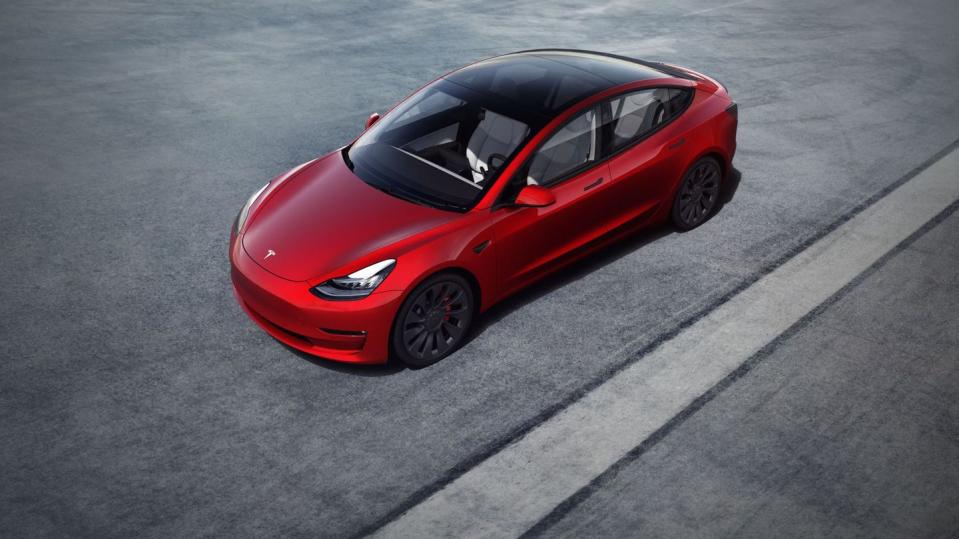
WHY WE LOVE IT The best-selling electric vehicle is such for good reason – it's fun-to-drive and its 2021 redesign means a host of upgrades. Plus, it's the least expensive way to get a much-coveted Tesla! Best of all, as one tester noted, "Every time they push out a software upgrade, my car gets better. That's a first."
STANDOUT FEATURES Even the base trim offers over 260 miles of claimed range, with higher trims going upwards of 350 miles. The new design has a power-operated trunk and improved finishes.
GOOD TO KNOW For those new to the Tesla-world, the touchscreen control of everything may require some adjustment. And backseat passengers may feel noticeably cramped, particularly on longer hauls.
LAB RESULTS The brand synonymous with electrics and luxury offers this relatively affordable iterant to help mainstream Tesla's offerings. And as one would expect with a Tesla, it's extremely responsive and fast.
2021 Tesla Model 3, from $36,990 (base price); EPA-estimated range: 263+ miles
Best Electric Luxury Vehicle
Polestar 2
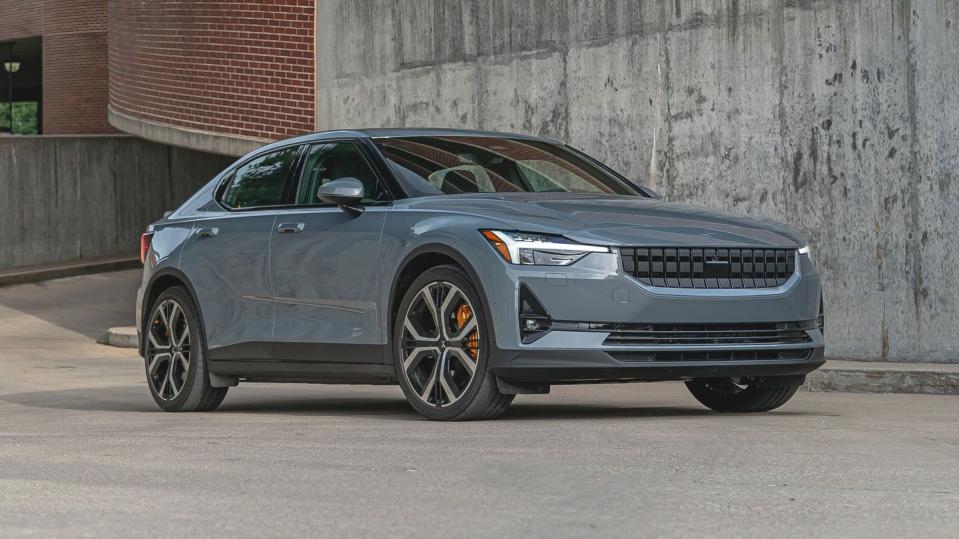
WHY WE LOVE IT The second car from Volvo's new electrified performance brand rivals the Tesla Model 3. And we're gluttons for a frunk (trunk in the front!) – you can fit a carry on there!
STANDOUT FEATURES The 11" infotainment screen is the first to integrate Google's new Android Automotive OS system. And the expansive glass roof provides an unobstructed panoramic view.
GOOD TO KNOW While the drive and experience are exceptional, servicing is challenging as there are only four dealer locations currently.
LAB RESULTS Our pals at Car and Driver were super impressed with the new Google OS, and we can't wait to see it infiltrate more cars.
2021 Polestar 2, from $59,900 (base price); EPA-estimated range: 233 miles
Best Electric Compact Car
Chevy Bolt EV
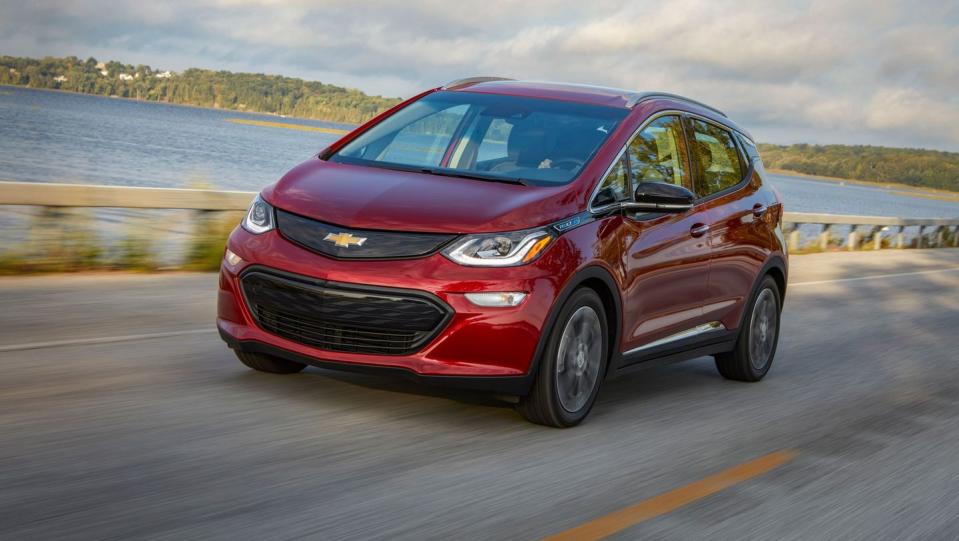
WHY WE LOVE IT It's a peppy electric with a practical range (250+ miles) whose price tag makes it palatable for many. It's a great commuter electric that's a cinch to park in cities.
STANDOUT FEATURES For its size, the passenger legroom is quite sprawling. It has ample standard features including Android Auto and Apple CarPlay. And the hatchback design allows for good cargo hold.
GOOD TO KNOW Both the driver and passengers will feel slighted by the interior cabin quality.
LAB RESULTS Even for a small hatchback, the cabin feels expansive. It offers quick acceleration in line with its moniker.
2021 Chevy Bolt EV, from $36,500 (base price); EPA-estimated range: 259 miles
Best Electric Subcompact SUV
Kia Niro EV
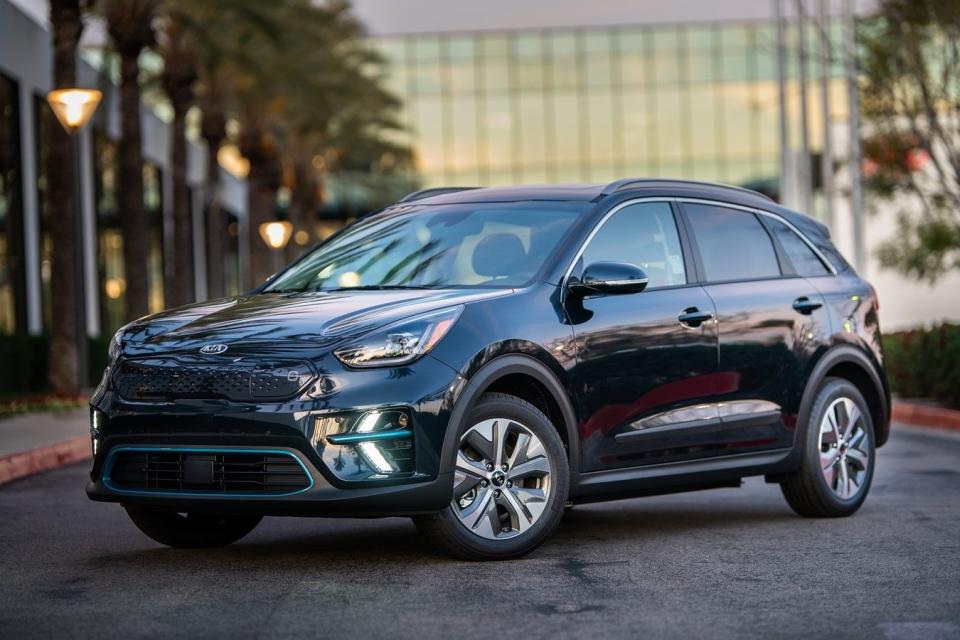
WHY WE LOVE IT There's a lot to like, especially for its comparatively affordable price. It offers an enjoyable, refined drive in an attractive bodied vehicle.
STANDOUT FEATURES There's a lot included standard, like heated front seats, Apple CarPlay and Android Auto, DC fast charging and a load of driver assistance tech (i.e. forward-collision warning, lane-keeping assist, etc.).
GOOD TO KNOW There's an available Cold Weather Package that's ideal for colder climates to ensure efficiency of vehicle with a battery heather and heat pump. Plus, you'll get a heated steering wheel.
LAB RESULTS The Niro EV provided quick acceleration and good handling capabilities in a roomy interior.
2020 Kia Niro EV, from $39,090 (base price); EPA-estimated range: 239 miles
Best Electric Luxury Subcompact SUV
Volvo XC40 Recharge
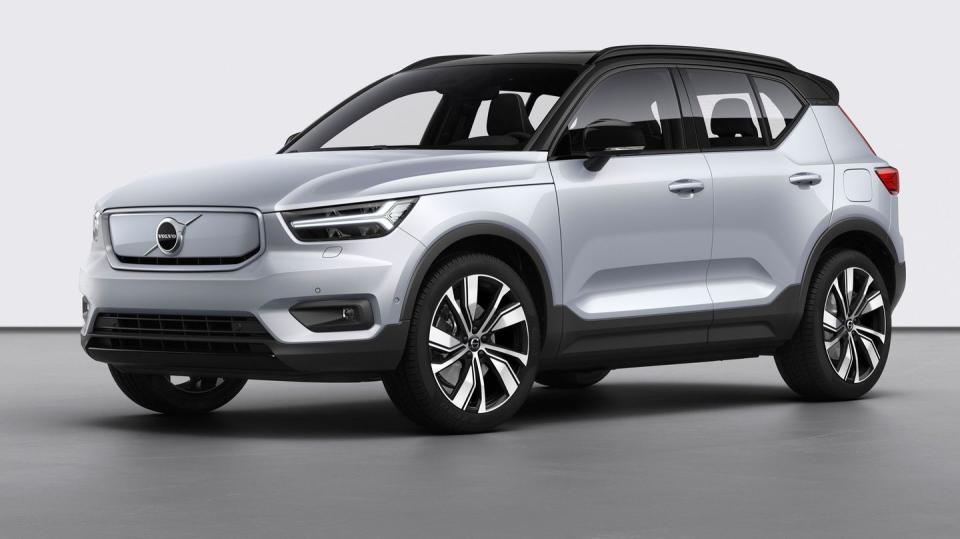
WHY WE LOVE IT In an ever-expanding premium electric market, Volvo's first fully electric vehicle offers a smooth and quiet ride with a luxurious cabin. It's built on the same platform as the Polestar 2, Volvo's Compact Modular Architecture (CMA).
STANDOUT FEATURES We're fans of the integrated Android Automotive which allows drivers to easily control navigation, music and HVAC by asking, "Hey Google ..." Drivers can choose between different gauge displays behind the wheel – Car Centric is heavy on info like driver assist functions, Navi focuses on maps and directions, and Calm provides a minimalist layout.
GOOD TO KNOW Driver’s may be baffled not to find a stop/start button the first few rides as you just need to sit down (there’s a sensor in the seat) and move the shifter for the car to go into drive. Cargo space isn't abundant, but there is a frunk to help with some extra bags.
LAB RESULTS We were particularly impressed by this powerful EVs dedication to safety as one would expect of a Volvo. Our engineers are fans of this family-friendly compact crossover in both gas and electric versions thanks to its spacious interior and refined ride.
2021 Volvo XC40 Recharge, from $53,990 (base price); EPA-estimated range: 208 miles
Best Electric Compact SUV
Ford Mustang Mach-E
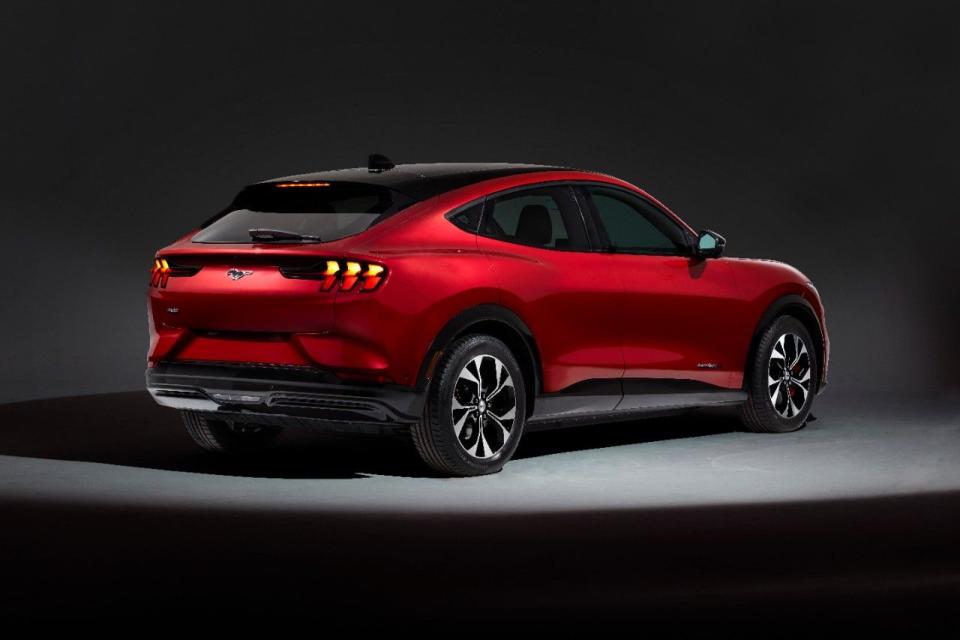
WHY WE LOVE IT Ford's first all electric SUV doesn't disappoint. It offers a smooth, quiet ride with a range of up to 300 miles (dependent upon the vehicle build and battery).
STANDOUT FEATURES It's a sleek and modern vehicle. Each vehicle comes with a Ford mobile charger – allowing for home charging without a charger. You can use a standard 120V home outlet (you can get about 30 miles of charge overnight) or charge about 7x faster on a 240V outlet.
GOOD TO KNOW You'll likely want to opt for the Mach-E Premium trim for fast-charging capabilities and the optional extended-range pack if you'll be doing notable long-distance treks. (Alt: Don't let the name fool you, this vehicle shares little with its namesake Mustang on the inside.)
LAB RESULTS A modified version of Ford's Sync 4 infotainment system allows for a responsive and intuitive interaction for up to three driver profiles. And an arsenal of driver-assisted tech features are available
2021 Ford Mustang Mach-E SUV, from $42,895 (base price); EPA-estimated range: 230+ miles
Best Electric Luxury Compact SUV
Audi e-tron
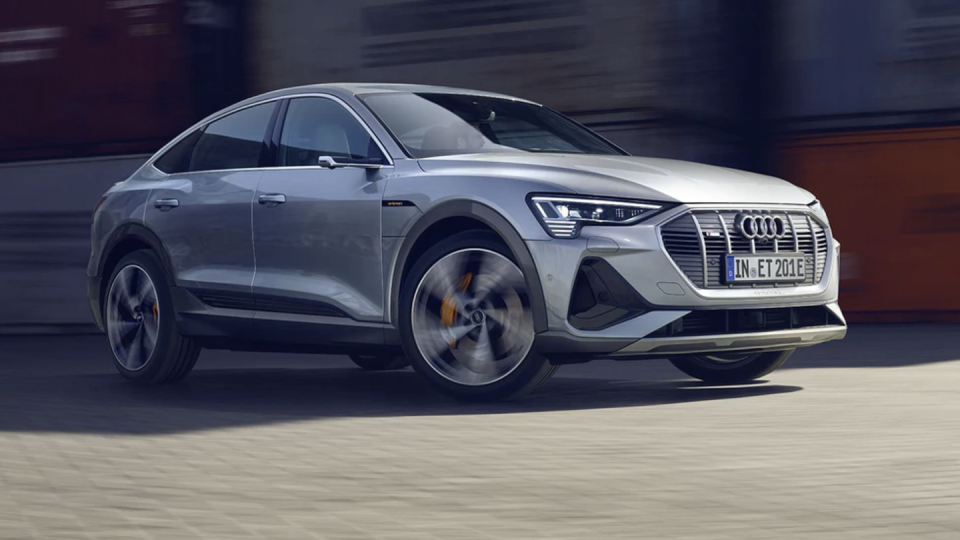
WHY WE LOVE IT Audi's first foray into a fully-electric vehicle doesn't disappoint. It's luxurious, and offers good handling and a quiet cabin.
STANDOUT FEATURES If you opt for the Tow package you can take advantage of the 4000-pound towing capacity.
GOOD TO KNOW You'll likely want to upgrade to include the Convenience Plus package for advanced driver assist technologies. And while estimated range is over 200 miles, it's not as high as rivals.
LAB RESULTS Passengers have ample space to enjoy a refined, whisper-quiet ride.
2021 Audi e-tron, from $65,900 (base price); EPA-estimated range: 222 miles
You Might Also Like
